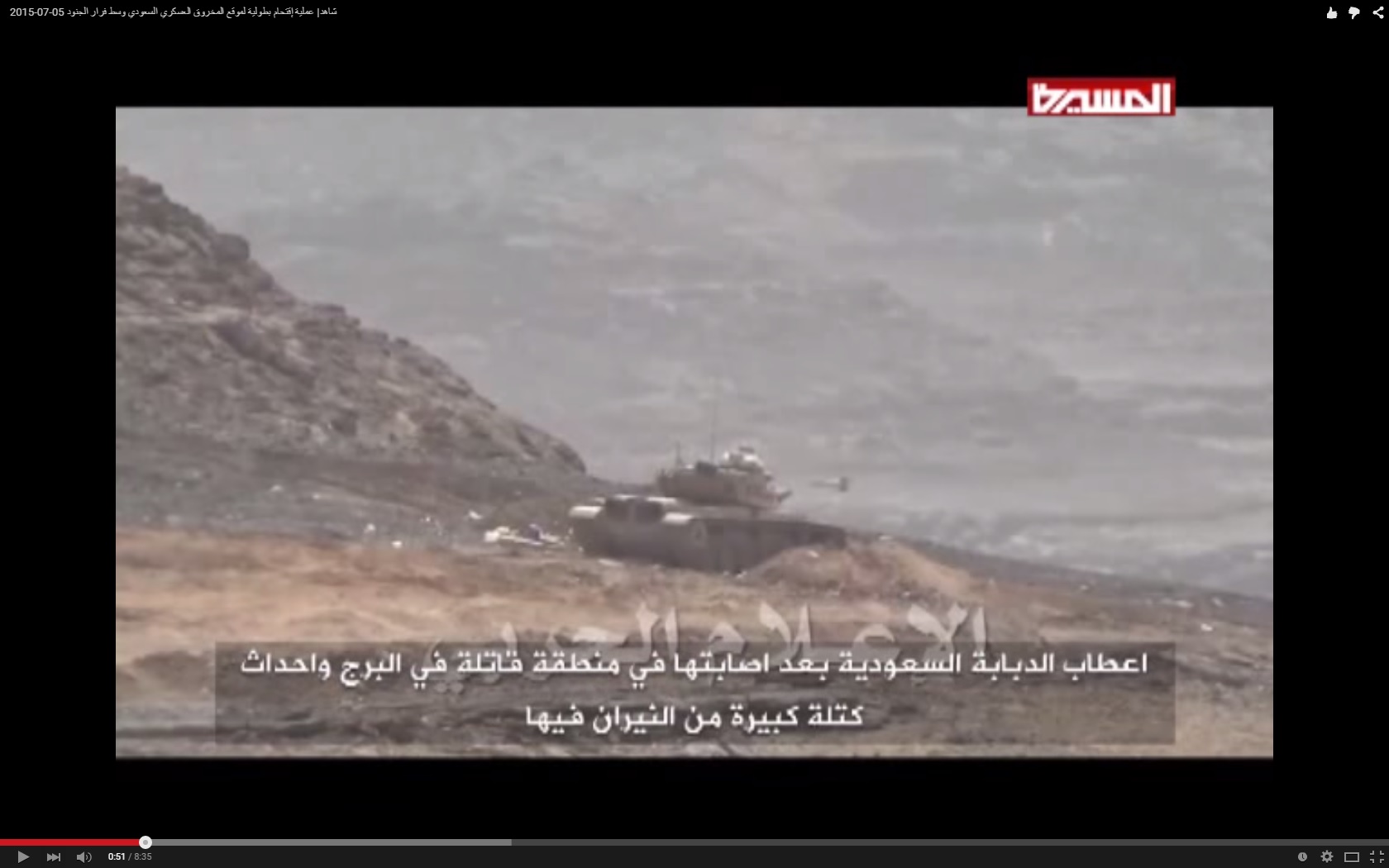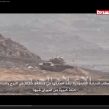
BRIEFS
Publication: Terrorism Monitor Volume: 13 Issue: 14
By:

HOUTHI INCURSIONS, IRANIAN PROPAGANDA TARGET SAUDI ARABIA’S NAJRAN PROVINCE
James Brandon
During the last month, a series of developments in Najran, both a province and its capital city in southwestern Saudi Arabia, close to the Yemeni border, suggest Saudi Arabia’s ongoing conflict with Yemen’s Zaydi Shi’a Houthi movement may be increasingly spilling into Saudi territory. According to some sources, the conflict may potentially even be fueling local dissatisfaction with Saudi rule. Significantly, Najran has a significant presence of Ismaili Shi’as, who historically formed a majority in the city and surrounding areas, and also a small number of Zaydi Shi’as, hailing from the same sect as Yemen’s Houthi movement.
Through the last month, a series of raids and cross-border shelling and rocket fire into Saudi Arabia by the Houthis have been reported. For instance, Yemen’s official news agency, currently controlled by the Houthi-aligned government in Yemen’s capital Sana’a, reported on July 3, that Houthi fighters and the Yemeni Army had raided a military camp in Saudi Arabia’s Jizan province, killing “a number” of Saudi soldiers and destroying armored vehicles, while other reports related cross-border missile attacks (Saba News, July 3; Saba News, June 29). Saudi Arabia has confirmed some such incidents; for instance, the Ministry of Interior said that one Saudi soldier was killed in cross-border shelling on July 27, and on June 30, it reported another soldier’s death in unspecified circumstances (SPA, June 28; SPA, June 30). Meanwhile, the Houthis’ al-Masirah TV station has posted videos online purporting to show Houthi fighters recently operating inside Saudi Arabia. For instance, one video, posted on July 1, appears to show fighters using a wire-guided missile against two Saudi armored vehicles, destroying at least one, close to the Saudi Arabia-Yemen border (al-Masirah TV, July 1). Another al-Masirah video shows RPG-armed Houthi fighters destroying a Saudi tank, a number of which were recently moved to the Yemeni frontier (al-Masirah TV, July 5; IHS Jane’s Defence Weekly, May 12). The videos clearly demonstrate—as they are intended to—the Houthis’ ability to take the fight to Saudis.
In a distinct but related development, Iranian state media has separately reported on alleged organized domestic opposition to the Saudi government taking shape in Najran. Notably, in mid-June, Iran’s state-run news agency reported that a new group called Ahrar al-Najran (“Free Ones of Najran”) had been formed in the region (Fars News, June 17). The agency also quoted “Abu Bakr Abi Ahmad al-Salami,” a purported leader of the movement, as saying that “all tribes of the region are members of the Ahrar al-Najran Movement,” and that they had declared the secession of the region from Saudi Arabia. The Iranian agency separately claimed that the movement had captured a military base, shot down a Saudi helicopter, engaged in numerous clashes with government forces and also set up an organization called “The Youth of Najran” (Fars News, July 2). There is no independent corroboration of any of these events, and it seems most likely that these reports are part of an Iranian psychological operations initiative targeting the Saudi government. The claims are perhaps intended to unnerve the Saudis, to provoke a Saudi overreaction in Najran that then prompts a genuine uprising from locals or else to serve as a warning of Iran’s willingness to stir up dissent in Saudi Arabia.
It is also possible that there is a kernel of truth to Iran’s claims. During 2000, for instance, there were a series of small-scale violent confrontations in Najran between the security forces and local Ismailis. These related largely to Saudi attempts to repress Ismaili practices in favor of Wahhabism, an import to the region, and also over local socio-economic issues. Although the Saudi government quashed the movement and jailed those involved, none of the local Ismaili grievances have been substantially addressed since then. [1] It is also by no means impossible that members of Najran’s local tribes, such as the Benu Yam, which is predominantly Ismaili, sympathize with the Houthis and continue to bear grudges against the Saudi government, particularly in light of Saudi Arabia’s ongoing aerial campaign in Yemen which has caused large-scale civilian deaths. It is similarly possible that Iran has sought to reach out to Ismaili individuals and tribal leaders in the Najran region—not withstanding ethnic and religious differences between the tribes and Iran—just as it has done previously in Lebanon and Iraq, and to lesser extents in Bahrain and Saudi’s Shi’a-inhabited Eastern province. Iran has also done this in Yemen itself, where it likely provides a level of military support to the Houthis. While one should be wary of reading too much into Iranian and Houthi propaganda, the situation in Najran has the clear potential to degenerate further in coming weeks and months, particularly if the Saudi-Houthi conflict continues to drag on inconclusively, or if either side seeks to escalate the conflict in the border region.
Note
1. For more detail, see “The Ismailis of Najran,” Human Rights Watch, 2008. https://www.hrw.org/sites/default/files/reports/saudiarabia0908web.pdf.
ISLAMIC STATE REMAINS ROBUST OPPONENT DESPITE RECENT DEFEATS
James Brandon
The Islamic State militant group has continued to fiercely contest ground in Syria during the last fortnight, following the loss of the strategic border town of Tal Abyad to mainly Kurdish forces in mid-June. In particular, fighting between the Islamic State and its opponents in the last week has focused on the town of Ayn Issa. This is located to the south of Tel Abyad, at a key crossroads linking the main east-west highway in northern Syria with a north-south route connecting the Islamic State capital of Raqqa with the Turkish border. Joint Kurdish-Arab forces had first captured Ayn Issa on June 22-24; however, on June 6-7, the Islamic State launched a surprised attack and managed to retake the town and some surrounding areas, according to some sources, as a result of infiltrating the town covertly (ARA News, June 25). By June 8-9, Kurdish forces had managed to recapture the area again (Bas News, July 9; ARA News, July 9).
Similarly, on July 7, Kurdish fighters, in conjunction with the Arab fighters via the Burkan al-Firat (“Euphrates Volcano”) joint operations room, reportedly repulsed an Islamic State attack on other areas in northeast Syria (YPG, July 8). Other attacks took place south of Kobane, but were beaten off by Kurdish ground forces, with assistance from U.S. airstrikes (ARA News, July 9) These incidents show that gains by Kurdish and Arab anti-Islamist forces against the Islamic State remain fragile and liable to reverses in many parts of Syria. The incidents also indicate that Islamic State fighters remain aggressive, particularly when seeking to regain control of strategic road junctions, routes providing access to the Turkish border and other key locations.
At the same time, in Iraq, the conflict between the Islamic State and the Iraqi government appears to have entered a quiet period. There have been some recent localized attacks. For instance, the Islamic State launched an unsuccessful attack on Kurdish positions in Tal Afar (located between Mosul and the Syrian border) in late June (Rudaw, June 27). However, in general, neither side is actively seeking to challenge the other’s territorial control. This reflects the failure of much-hyped Iraqi government attempts earlier in the year to challenge the Islamic State’s control of mainly Sunni areas, and also underlines the reluctance of the Iraqi Kurdish forces to contest Arab-majority areas. Despite this, Iraqi and coalition airstrikes have continued, hitting Islamic State positions near Fallujah and Kirkuk in recent days (Rudaw, July 8). One such attack killed “Mina PKC,” an Iranian Kurdish Islamist famous for his skill with a Russian-made PKC machine gun, who had previously fought with jihadist groups in Afghanistan and Pakistan, underlining the potential of these airstrikes to gradually degrade the Islamic State, ahead of a future government ground offensive (Rudaw, July 19). The slow progress in Iraq, which is partly the result of political and military weakness in the Iraqi government, underlines that removing the Islamic State from the country will be a long process.





